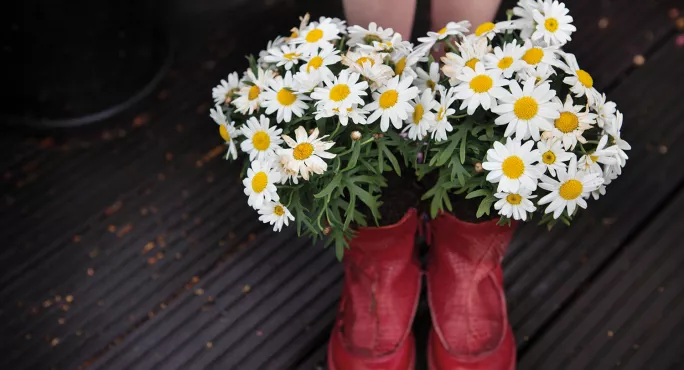How plants can help metacognition to blossom in school

When students arrive to form time in the morning, they don’t expect to engage with horticulture. However, I’ve found that running projects centred around nature can allow students and teachers to embody positive wellbeing practices, and therefore the genuine doing of social and emotional learning in a critical way.
Metacognition is the processes involved when learners plan, monitor, evaluate and make changes to their own learning behaviours - and applying this notion to include wellbeing principles allows students to map out, assess, critique and adapt their own wellbeing behaviours.
Our curriculums empower artists, scientists and philosophers - and our pastoral interactions should do the same. The following project is a practical method of modelling positive metacognitive wellbeing during registration times.
Tes magazine: Is cognitive science a load of trouble?
Metacognition: 7 strategies to use in any class
More: 3 simple ways to bring metacognition to your class
Modelling positive metacognitive wellbeing
Stage 1: Designing artists
Students are asked to design unique plant pots made from recycled materials, such as yoghurt pots, soup tins and bottles. To aid the development of shared metacognitive regulation and knowledge, students should be encouraged to complete the project in pairs or small groups. As artists, students learn to interpret and respond to nature and their worlds creatively and collaboratively.
Stage 2: Growing scientific knowledge
Students bring in (or are provided with) seeds from leftover fruit and veg, then plant them in soil in their pots and care for them as they grow. They focus on the methods used by biologists to grow life but are, in fact, practising their social and emotional learning in a practical way.
Caring for life alongside another human being requires understanding and empathy for others and the management of one’s own emotions, behaviours, strengths and weakness to achieve the goal of growing the plants; the making of ethical and constructive choices to enable the plant to thrive; and the formation of positive relationships that are strong and mature enough to accommodate any conflict that may occur.
As scientists of both the physical and social realms, students learn to methodically research, represent and share their own (wellbeing) practices.
Stage 3: Blossoming philosophers
As their plants grow, students engage with a range of related activities including writing poetry, stories and newsletter entries, and dramatic recreations of their plant’s journey of growth. These activities allow students to ponder important existential questions surrounding nature, science and themselves, and their personal and socially constructed worlds such as how, why and what if?
Enacting these activities in a way that is framed by metacognitive processes means that students can form, invent and fabricate concepts that allow them to think with/through and do wellbeing in a meaningful and impactful way.
As philosophers, students are positively engaged in considering the deep, infinite possibilities that caring for seedlings affords.
Thinking about thinking through wellbeing
“Morning, Sir! Please, please, please can we water our sunflowers before we start form today?” asks a usually reserved student.
“Of course!” I reply without a second thought.
Thinking, however, is exactly what students are learning and (hopefully learning to enjoy) to do. They should be giving their thinking a second (and third, fourth, a hundredth) thought. This, in itself, may facilitate the blooming of positive wellbeing: if students can recognise and “think through” their emotions and behaviours, they can critically engage with and adjust them as they develop.
“Morning, Sir! Please can I show you and my peers that I am actively looking after my own and others’ wellbeing by metacognitively realising my own social and emotional thought processes as an artist, scientist and philosopher?” is one interpretation of what this particular student was trying to articulate.
It is our responsibility, as practitioners of positive metacognitive wellbeing, to allow students to create through, experiment through and philosophise through their own embodied emotions and behaviours. The project detailed above is just one method of introducing and inspiring metacognitive wellbeing.
Callum Bates is a music teacher in the East of England
You need a Tes subscription to read this article
Subscribe now to read this article and get other subscriber-only content:
- Unlimited access to all Tes magazine content
- Exclusive subscriber-only stories
- Award-winning email newsletters
Already a subscriber? Log in
You need a subscription to read this article
Subscribe now to read this article and get other subscriber-only content, including:
- Unlimited access to all Tes magazine content
- Exclusive subscriber-only stories
- Award-winning email newsletters